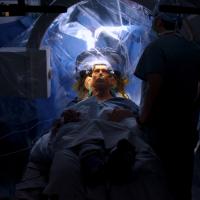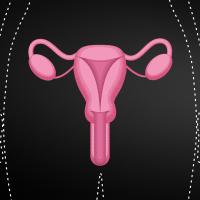Healthcare is in the midst of technological disruption as the advancement of robotic surgery is helping surgeons perform less invasive procedures, with the goal of improving recovery for patients.
A leader in surgical innovation, Intuitive specializes in developing and manufacturing surgical technology such as the da Vinci surgical system. The da Vinci surgical system is a state-of-the-art machine, which utilizes robotics to limit the invasiveness of operations, giving surgeons greater levels of precision, vision, and control during surgery.
In 2017, the significance of this technology hit home for one of the very people working to advance it. When Ted Rogers, Intuitive’s vice president of vision engineering, was diagnosed with an aggressive form of prostate cancer, his surgeon relied on one of the products he designed to treat his condition.
The Evolution of Surgical Technology
Over time, surgical tools have evolved according to the needs of both surgeons and patients. Open procedures have long been performed because they allow surgeons to access anatomy with their hands and see the surgical site in 3-D.
However, open surgery can be cumbersome and difficult, and the large incisions these procedures require often translate to long recoveries for the patient. This brought forth laparoscopic surgery, a minimally invasive surgical technique intended to decrease the size of incisions and expedite recovery.
Laparoscopic surgery brought about its own difficulties. The tiny tools used to perform these surgeries were not as flexible for surgeons as their own hands.
Laparoscopic movements were also difficult to master as they’re reversed, meaning that if a surgeon needs to move the tip of an instrument down, they have to move their hand up. When needing to move an instrument to the left, they have to move their hand to the right.
In training, the procedure might seem like a disorienting, mental labyrinth. Surgeons had to learn how to maneuver under these circumstances while viewing the surgical site on a 2-D screen.
A new vision emerged in the late 1990s: robotic-assisted surgery aimed to give dexterity and 3-D vision back to surgeons while maintaining a limited level of invasiveness using small instruments, approximately the size of your pinky finger.
Now, robotic-assisted surgeries, pioneered by Intuitive and made possible by its da Vinci surgical system, have allowed doctors to perform minimally invasive surgeries with only tiny incisions to fit small robotic tools into a patient’s body. The tools are then controlled by a skilled surgeon at a nearby console.
Using surgical robots may enable faster recovery times than open surgery. For an “open” prostatectomy (surgical removal of the prostate gland), a patient would have previously needed to stay in the hospital for at least a few days. With robotic surgery, it may be possible for a patient to be back home within 24 hours.
Thinking of his own robotic surgery, Intuitive’s Ted Rogers said, “I was fortunate enough to get an appointment with one of the top prostate surgeons on the west coast who happens to use our robotic systems.”
“I have two daughters. They saw me go through my own surgery and how, for as major a surgery that was, how much of a non-event it was. I was in the hospital one morning and back the next.”
The new opportunities that Intuitive’s robotic tools afford surgeons are enhancing care and have sparked a new frontier for the future of surgery.
Imagining the Future of Robotic Surgery
Intuitive’s advanced technology has gained mainstream acclaim and has even been featured on hit medical shows Grey’s Anatomy and The Good Doctor. More importantly though, to date, Intuitive’s robotic surgery systems have been used in over seven million surgeries.
Their next creation is the Ion endoluminal system, a robotic-assisted platform that enables minimally invasive lung biopsy. The system features an ultra-thin and maneuverable catheter that allows navigation far into the peripheral lung.
Ion allows pulmonologists access into areas of the lungs previously unnavigable with unprecedented stability for the necessary precision.
Intuitive sees the progress their systems have made as only the beginning. Robotic surgery helped Ted Rogers get back to his life and now he looks forward to the future potential of his work.
“At Intuitive we talk a lot about improving patient outcomes. That concept can sometimes become abstract. My experience says this is no longer something that is abstract. It has given me more insight into what it’s for and why it’s important,” Rogers says.
“I think we’re still in the early stages of robotic-assisted surgery. We need to envision what the future might be by improving outcomes and helping surgeons treat their patients more quickly, more comfortably, with better precision, and with more information.”
The future of the surgical field undoubtedly lies in robotics, and with Intuitive as a key player, it’s exciting to imagine what the next phase of innovation will bring.
For more interesting news about the people and ideas that are changing our world, subscribe to Freethink.


